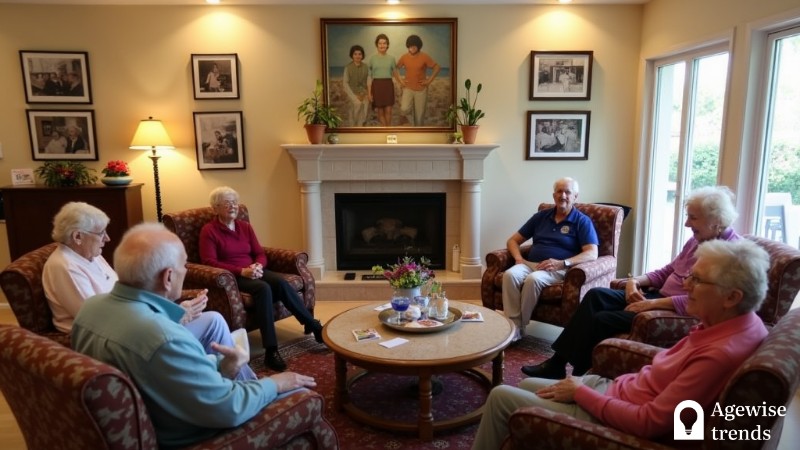Western boots have stomped their way from the dusty plains to the forefront of modern fashion, proving their versatility and timeless appeal. But for those navigating the landscape of mature style, incorporating these iconic boots requires a thoughtful approach. It’s about more than just throwing on a pair; it’s about mastering the art of accessorizing to create a look that’s both stylish and sophisticated.
Key Takeaways
Western boots have grown from traditional ranch gear into a versatile and stylish fashion staple for those who appreciate quality style.
- Western boots work with a range of outfits—from boho dresses to sleek, minimalist looks—showing off their versatility.
- The secret to styling western boots is to pick top-notch, understated accessories that enhance the boots without stealing the spotlight.
- Nailing a cohesive look means balancing the bold statement of the boots with simple, neutral clothing while adding a pop of color with your accessories.
Beyond the rodeo: embracing versatility
The true magic of western boots resides in their remarkable adaptability, a quality that has propelled them far beyond their traditional ranching and rodeo origins. This evolution speaks to their inherent design, which, while rooted in practicality, possesses a timeless aesthetic. The sturdy construction, often featuring high-quality leather and distinctive stitching, translates effortlessly into diverse fashion landscapes.
Whether paired with a flowing bohemian maxi dress, adding a touch of rugged charm, or juxtaposed against the clean lines of a minimalist ensemble, creating a compelling contrast, western boots prove their ability to bridge stylistic gaps. They are no longer a costume piece but a versatile foundation upon which to build a personal style narrative.
This versatility stems from the wide array of styles and finishes available. From sleek, polished leather to distressed suede, and from classic pointed toes to modern square toes, there’s a western boot to suit every taste and occasion.
The classic choice: A classic leather western boot in a neutral tone like brown, black, or tan is a wardrobe staple. These boots pair effortlessly with tailored trousers, midi skirts, and even flowy dresses.
A touch of detail: Look for boots with subtle embellishments like intricate stitching, embossed leather, or a low-key metallic accent. These details add visual interest without being overly flashy.
Heel height matters: For everyday wear, a low to mid-heel is ideal, offering both comfort and style. A higher heel can elevate a dressier ensemble, but prioritize stability and walkability.
Mature accessorizing: the key to refinement
Mature accessorizing is about curating a look that reflects personal style while maintaining a sense of elegance. It’s about choosing pieces that complement, not overwhelm.
Less is more: Avoid overloading your outfit with too many accessories. Focus on a few key pieces that make a statement.
Quality over quantity: Invest in high-quality accessories that will stand the test of time. A well-made leather belt, a silk scarf, or a classic handbag can elevate any outfit.
The power of texture: Play with different textures to add depth and interest. Consider pairing smooth leather boots with a suede jacket or a chunky knit sweater.
Jewelry with purpose: Opt for timeless jewelry pieces that complement your personal style. Delicate gold or silver necklaces, understated earrings, or a classic watch can add a touch of sophistication.
Handbags that complement: A structured handbag or a chic crossbody bag can complete your look. Choose a bag that complements the color and style of your boots.
Scarves and wraps: A silk scarf or a cashmere wrap can add a touch of elegance and warmth. Experiment with different ways to tie or drape them for a personalized touch.
Belts with impact: A well-chosen belt can define your waist and add a touch of western flair. A leather belt with a subtle buckle can complement your boots without being overly thematic.
Creating a cohesive look
The key to successfully incorporating western boots into a mature wardrobe is to create a cohesive look that reflects your personal style.
If your boots are the statement piece, keep the rest of your outfit relatively simple. You must also consider proportions by pairing taller boots with longer hemlines or slim-fitting trousers to create a balanced silhouette.
When it comes to colors, neutral colors like black, brown, gray, and beige create a sophisticated and versatile base for your outfit. If you’re wearing neutral tones, consider adding a pop of color with a scarf, handbag, or piece of jewelry.
And of course, always remember that confidence is your best accessory. Ultimately, the most important accessory is confidence. Wear your western boots with pride and let your personal style shine through.
Final words
Ultimately, the power of western boots lies in their ability to inject a sense of individuality and effortless cool into any outfit. They embody a spirit of rugged independence, a touch of the untamed, that resonates with contemporary fashion sensibilities.
By embracing their versatility and understanding how to incorporate them into different styles, individuals can create looks that are both unique and timeless. Western boots are no longer confined by genre; they are a canvas for personal expression, a testament to the enduring appeal of classic design reimagined for the modern world.
And by mastering the art of mature accessorizing, you can confidently incorporate western boots into your wardrobe, creating looks that are both stylish and sophisticated. Remember, it’s about owning your look and expressing your unique sense of style.














